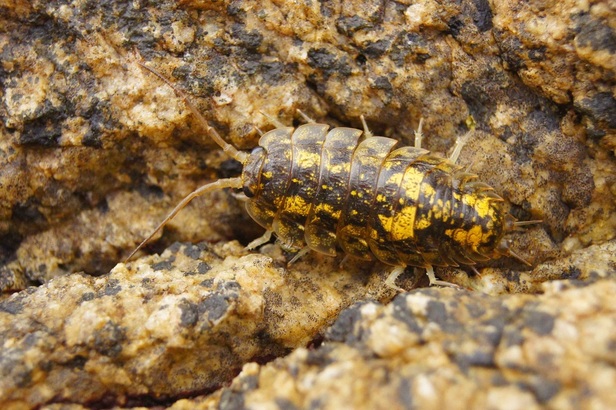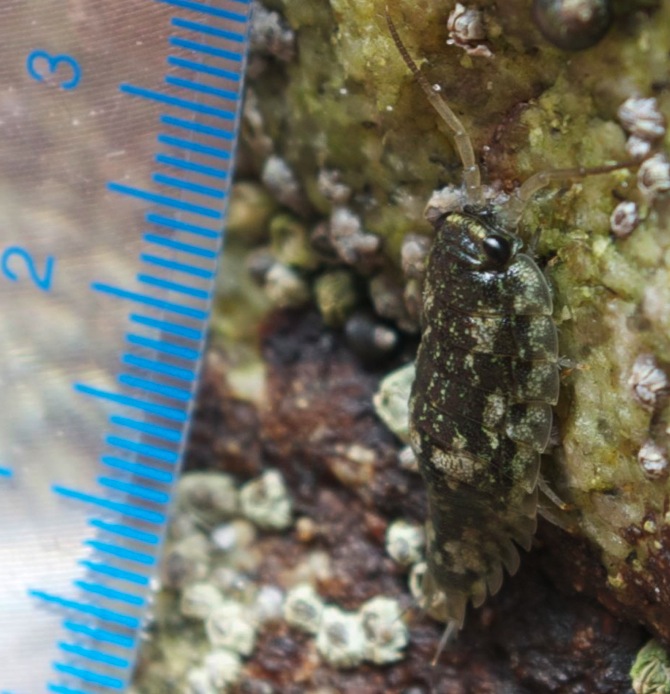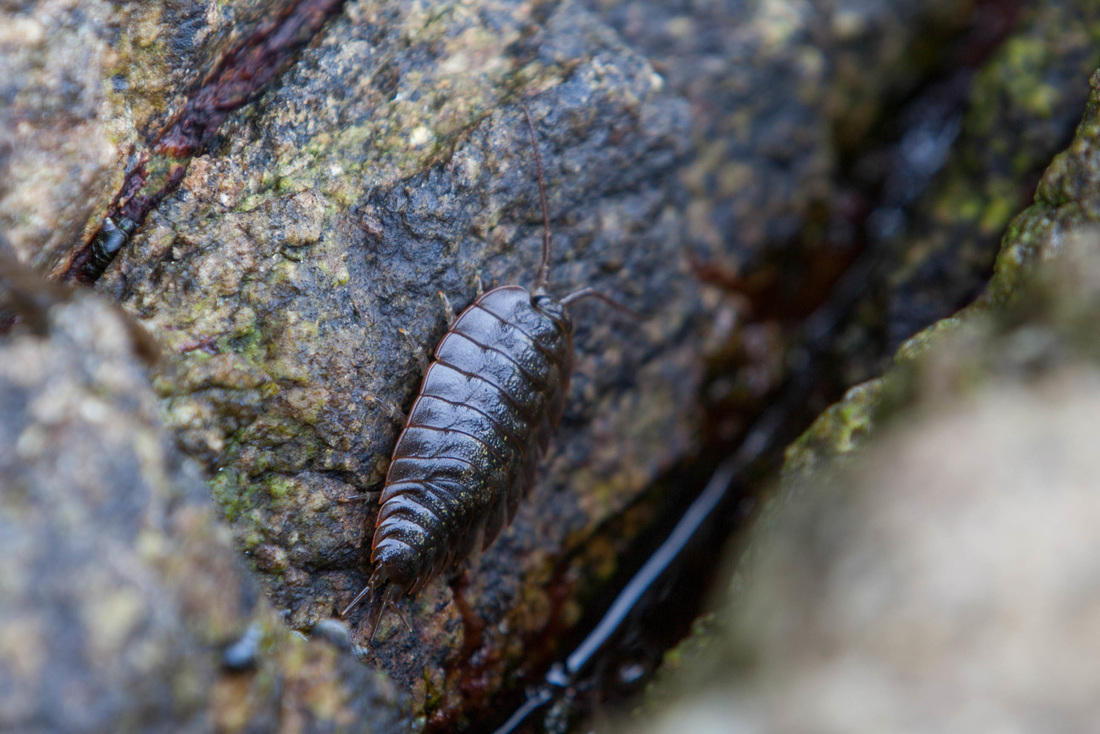Sea slater, northern sea roach, rock louse • Ligia pallasi, L. pallasii
Identification
This small crustacean looks like a flattened version of the familiar common pill bug, with the addition of paired uropods at its posterior end. It is grey, sometimes slightly mottled with lighter markings, and reaches 3.5 cm long.
Habitat & Range
The sea slater, a nocturnal creature, stays hidden in rock crevices and caves during the daytime. It usually lives 1-2 m above the high tide line on rocky shores, though may move further away from the splash zone if necessary. At night it emerges to scavange on dead plant and animal material in the high intertidal. Its range extends from the Aleutian Islands to central California (Santa Cruz).
Similar Species
The California sea slater (Ligia occidentalis), originally only documented in California, has appeared in some locations in southern British Columbia. It is smaller and has longer uropods.
Intriguing Info
The sea slater breathes air, and will drown if trapped in water. However it is also subject to desiccation and requires moist gills to breathe. It solves this problem by dipping its uropods in puddles of water.
iNaturalist
https://www.inaturalist.org/taxa/84264-Ligia-pallasii
This small crustacean looks like a flattened version of the familiar common pill bug, with the addition of paired uropods at its posterior end. It is grey, sometimes slightly mottled with lighter markings, and reaches 3.5 cm long.
Habitat & Range
The sea slater, a nocturnal creature, stays hidden in rock crevices and caves during the daytime. It usually lives 1-2 m above the high tide line on rocky shores, though may move further away from the splash zone if necessary. At night it emerges to scavange on dead plant and animal material in the high intertidal. Its range extends from the Aleutian Islands to central California (Santa Cruz).
Similar Species
The California sea slater (Ligia occidentalis), originally only documented in California, has appeared in some locations in southern British Columbia. It is smaller and has longer uropods.
Intriguing Info
The sea slater breathes air, and will drown if trapped in water. However it is also subject to desiccation and requires moist gills to breathe. It solves this problem by dipping its uropods in puddles of water.
iNaturalist
https://www.inaturalist.org/taxa/84264-Ligia-pallasii
References
Adams, M.J. (2005). Ligia pallasii (Sea slater). Beach Watchers. Washington State University. Accessed 02/02/2015.
Carefoot, T. Ligia pallasii Brandt, 1833. In Klinkenberg, Brian. (Ed.). E-Flora BC: Electronic Atlas of the Plants of British Columbia. Lab for Advanced Spatial Analysis, Department of Geography, University of British Columbia, Vancouver. Accessed 02/02/2015.
Lamb, A., and Hanby, B. (2005). Marine Life of the Pacific Northwest [electronic version]. Madeira Park, BC: Harbour Publishing.
Leno, H. and Helmstetler, H. (2002). Ligia (Ligia) pallasii Brandt, 1833. Invertebrates of the Salish Sea. Rosario Beach Marine Laboratory. Accessed 02/02//2015.
Authors and editors of page
Kelly Fretwell and Brian Starzomski (2015).
Adams, M.J. (2005). Ligia pallasii (Sea slater). Beach Watchers. Washington State University. Accessed 02/02/2015.
Carefoot, T. Ligia pallasii Brandt, 1833. In Klinkenberg, Brian. (Ed.). E-Flora BC: Electronic Atlas of the Plants of British Columbia. Lab for Advanced Spatial Analysis, Department of Geography, University of British Columbia, Vancouver. Accessed 02/02/2015.
Lamb, A., and Hanby, B. (2005). Marine Life of the Pacific Northwest [electronic version]. Madeira Park, BC: Harbour Publishing.
Leno, H. and Helmstetler, H. (2002). Ligia (Ligia) pallasii Brandt, 1833. Invertebrates of the Salish Sea. Rosario Beach Marine Laboratory. Accessed 02/02//2015.
Authors and editors of page
Kelly Fretwell and Brian Starzomski (2015).







